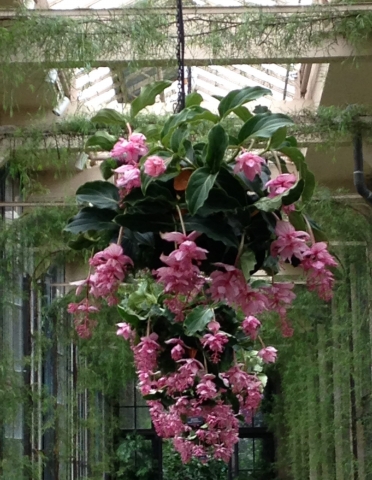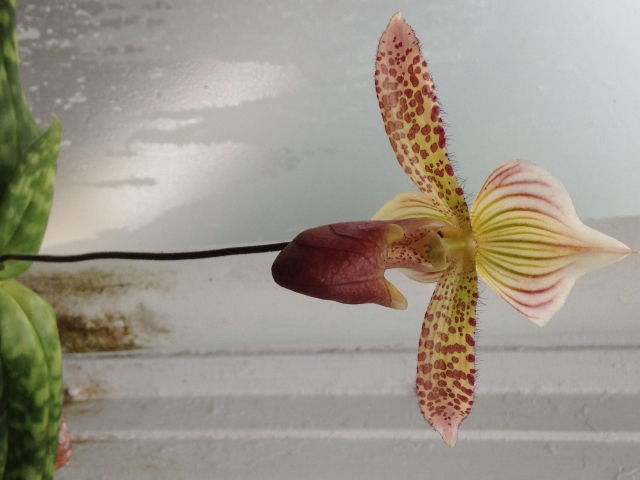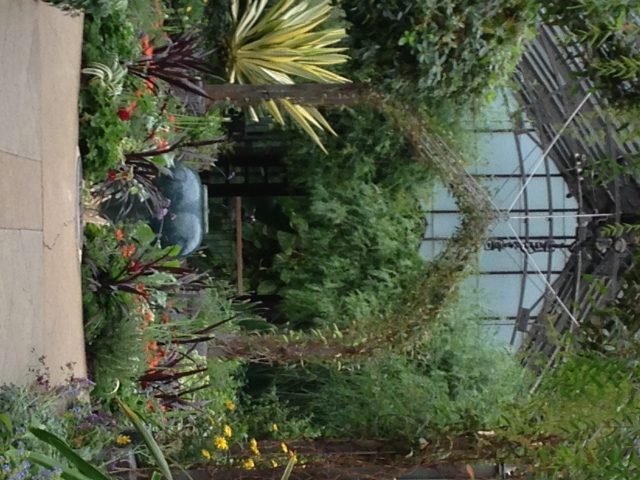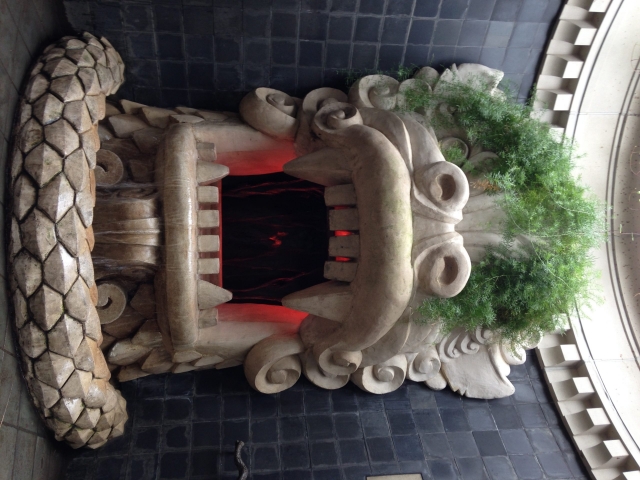As the long-awaited and much-needed rain finally teamed down on Toronto this morning I was reminded of a rainy afternoon I enjoyed – indoors — at Longwood Gardens outside Philadelphia this past spring.
Longwood began in 1906 when industrialist Pierre du Pont purchased a small farm near Kennett Square, PA, to save a collection of historic trees from being sold for lumber. Today, Longwood Gardens is one of the world’s great horticultural displays, encompassing 1,077 acres of inspiring gardens, woodlands, meadows, fountains, a 10,010-pipe organ and a huge conservatory.
And that conservatory offered more than enough to see and admire on a day that was too wet and windy to explore the outdoor displays.
Longwood Conservatory shelters 20 indoor gardens and some 5,500 plant varieties. Built in 1919, it now spans 195,668 square feet—or 4.5 acres—of some of the world’s most picturesque gardens and ultra modern facilities.
Orchids were a passion of Pierre du Pont and his wife, Alice. Both were charter members of the American Orchid Society. So, it is no surprise that the Orchard House is a perennial favourite. It offers a kaleidoscope of colour with more than 500 fragrant orchids — just a fraction of the 7,500 orchids at Longwood Gardens. To ensure a continuous display, the orchid grower hand picks and replaces the plants three times a week with others from its five orchid growing houses.
The Patio of Oranges, built in 1928, incorporates a Moorish, French, and Modernist inspired design. Permanent plantings of Mediterranean and sub-tropical flora complement large-scale displays of seasonal blooming plants. A gently flowing stream and waterfall provide the perfect setting for colourful flowering trees and fragrant shrubs.
Together with the Orangery, the Exhibition Hall with its original sunken marble floor is the centrepiece of the conservatory. Once used by the du Ponts for dances and dinner parties, the floor is typically flooded with a few inches of water to reflect the ever-changing seasonal displays. But, it is periodically drained for lavish performances and special events. Australian tree ferns thrive in the humid environment. The elegant bougainvillea trained on the pillars and walls is the original planting from the 1920s.
Built between 1919 and 1921, the adjacent Orangery was originally filled with citrus fruit trees. Today, flowering plants surrounding manicured lawns have become a focal point.
The greenhouse containing The Silver Garden was built in 1921 and originally used to grow peaches and nectarines. West Coast garden architect Isabelle Greene created the Silver Garden in 1989. Gray and silver-foliaged plants now fill this room, which mimics the dry, arid landscapes found in Mediterranean and desert regions.
The Bonsai Garden is virtually a living art gallery that changes with the seasons. Each plant in this miniature forest is a unique work of art, painstakingly groomed and trained to showcase beauty in every season. The Bonsai Display began in 1959 with 13 specimens. Several of the originals remain. Training on some of the oldest plants began in the early 1900s.
The Palm House, as its name implies, leads visitors through a canopy of towering palm trees in the tallest glass house. A walkway around the perimeter allows guests to view this garden from all angles and gaze down at lush groundcovers below. This jungle paradise features an array of palms and cycads that flourish in the warm environment. The Palm House opened on Palm Sunday, 1966 with a landscape of palms in all sizes and shapes.
The cool, green Fern Passage invites visitors to explore both familiar and exotic specimens. Boston, rabbit’s-foot and bird’s-nest ferns grow here along with other tropical plants, including a fascinating collection of insect-catchers such as pitcher plants and Venus fly traps.
There is also an imaginative Children’s Garden filled with hands-on water features, handcrafted sculptures, secret stairways and engaging plant displays.
No trip to this indoor haven would be complete without a visit to its washrooms, whether you need to or not. The facilities are demurely set into the longest green wall in North America. Resembling a lush green jungle, at 14 feet high and 300 feet long, this ferny glen is tucked in the corner of the East Conservatory. Designed by British landscape architect Kim Wilkie and installed in 2010, the wall contains 47,000 plants, provides oxygen and cleans dust from the air.
I visited this garden on the Northumberland Master Gardeners Brandywine Garden Tour. For more information, visit www.longwoodgardens.org.






















